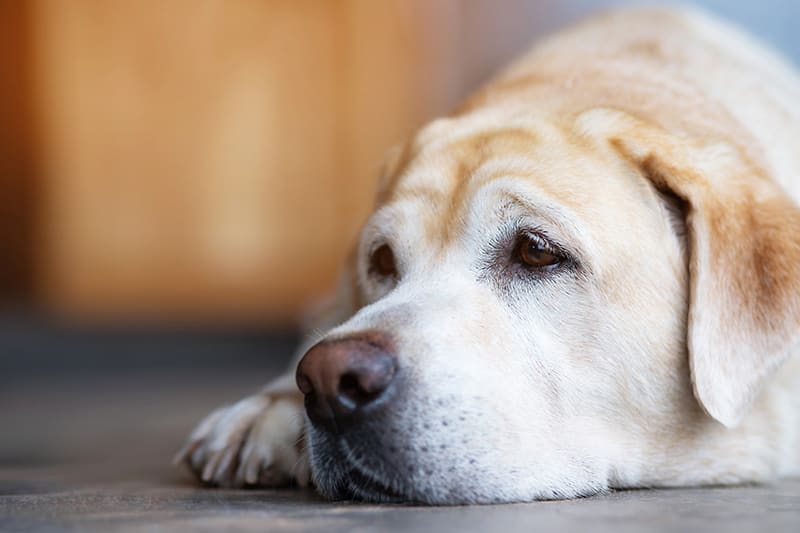Guide : Find Out What Causes Lung Cancer in Dogs

Lung cancer in dogs is one of the diseases that can affect our dear pets. As in humans, cancer is a dangerous and aggressive disease, being considered the main cause of death among animals.
There are different types of cancer that affect dogs, but some are more frequent, such as lung cancer, which in recent years has increased in pet cases.
Dog breeds with greater predisposition to lung cancer
Lung cancer is most common in older dogs, between the age of 10 to 12 years. Any dog can suffer from this disease, but some breeds are more likely to develop lung cancer, which is the case of breeds:
- Boxer ;
- Doberman pinscher;
- Australian Shepherd;
- Cowboy from Bern.
Types of lung cancer
Lung cancer can present two types of tumors, primary and metastatic .
In primary cancer, the tumor originated in the lung. They are rarer and have a greater possibility of spreading to other organs.
The metastatic tumor originates elsewhere in the body and spreads to organs such as the lung.
Symptoms of Lung Cancer in Dogs
One difficulty in diagnosing lung cancer early is that the onset of the disease may not show symptoms that are as visible to the guardian.
In some cases, about 25% have no signs of lung cancer.
- Coughs;
- Breath wheezing;
- Vomiting;
- Weight loss;
- lameness (pain caused by exertion);
- Loss of appetite;
- Hair loss;
- Fever;
- Quick breathing;
As the animal will not always show symptoms, periodic consultations with check-up can diagnose it early, which can help improve the response to treatment.
Diagnosis of lung cancer in dogs

One of the first tests done on a dog with symptoms of lung cancer is a physical examination.
The dog performs physical activities and the professional examines the lungs for some muffled or abnormal sounds.
In the process, other parts of the animal’s body are examined. If breathing difficulties are confirmed, the professional must continue with the request for further tests, as other diseases can also affect the respiratory part.
To make the correct diagnosis in Dog here are some tests that requested:
- Chest radiography: imaging exams such as x-rays are the first way to find out if there is a mass in the animal’s organ. It is a preliminary diagnosis and, according to the result, the veterinarian proceeds to investigation with more characteristic tests for this type of pathology. The presence of a mass is not necessarily a confirmation of cancer, so other tests need to be performed.
- Tomography: can be used in place of radiography, or it can be an adjunct to diagnosis. Tomography has clearer images and allows the professional to better investigate the organ and the presence of any tumor. The images are sharper, allowing a better dimension of the size and characteristics of the tumor.
- Biopsy: even with the images that x-rays or tomography provide, the only way to confirm if the tumor is malignant is with a biopsy. This test takes tissue samples and looks for cancer. The most common way to perform a lung biopsy is with a thoracotomy, a procedure where the chest cavity is opened surgically. Another way to perform a biopsy is with thoracoscopy, a video-assisted surgery that is less invasive but depends on the location of the mass to be performed.
Treatment for Lung Cancer in Dogs
After the exams, with confirmation of cancer, the animal will undergo some treatments, which must be guided by a professional.
Chemotherapy and radiotherapy can be included in the treatment after surgery, in cases where surgical treatment is not possible, chemotherapy can be indicated to delay tumor progression.
Lung cancer with metastases cannot be operated on, in a few cases, treatment can even be carried out in some nodules. For this stage of cancer, treatment with chemotherapy and radiotherapy is indicated .
There are other treatments that are gaining ground in veterinary oncology, the professional responsible for the treatment of the animal must guide what is the best treatment to follow.
During cancer treatment, the pet needs greater attention from guardians, since in the surgical recovery it will need some care such as administering medication, keeping the surgical site clean.
Dogs undergoing chemotherapy or radiation treatment also need care, as some side effects such as nausea, diarrhea and vomiting can be felt by the pet.
Some medications may be prescribed by a veterinarian to alleviate side symptoms.
Can lung cancer be cured?
Even with advances in veterinary oncology, cancer remains an aggressive and incurable disease.
The treatment is for a longer life expectancy and for the animal’s well-being.
When the tumor is primary and discovered without having spread to other organs, the dog has a survival time of a few years, in some cases up to 2 years.
In cases of metastasis, the prognosis is not so optimistic, these animals live about 2 months after diagnosis.